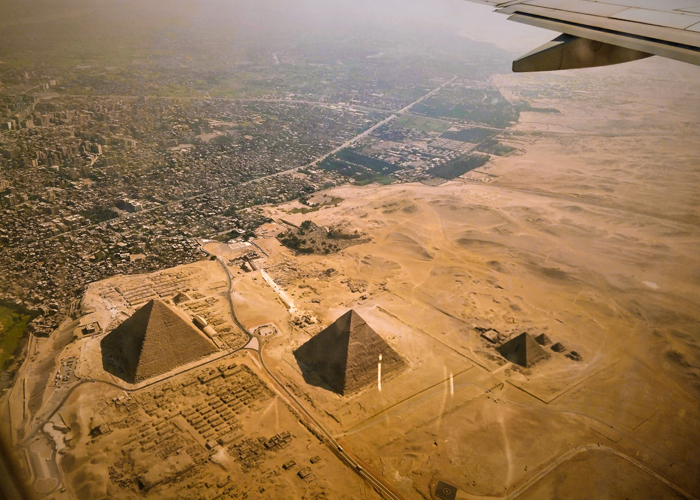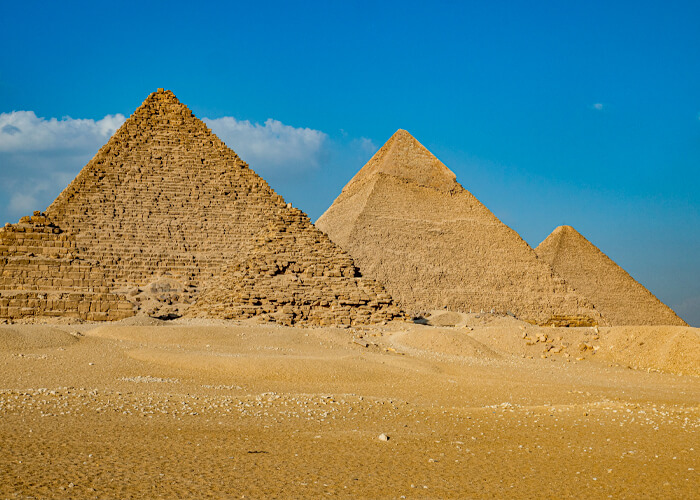Giza Pyramids Complex: The Last Standing Wonder of the Ancient World
Introduction
Giza Pyramids Complex is one of the most iconic landmarks on Earth and the only surviving wonder of the ancient world. For travelers, it offers not just a view of colossal stone structures but also a journey into the mysteries of ancient engineering, culture, and spirituality. Situated on the Giza Plateau, just outside Cairo, the Giza Pyramid Complex consists of the three pyramids of Giza, the Great Sphinx, temples, causeways, and smaller satellite pyramids. Visiting the site is more than a sightseeing activity—it is an encounter with human ingenuity that continues to amaze scholars, explorers, and travelers alike.
The Layout of the Giza Complex
The Giza Complex is a vast archaeological site covering the plateau on the west bank of the Nile. It includes not only the Giza Pyramids but also the Sphinx, worker villages, cemeteries, and temples that together formed a sophisticated funerary landscape. Each pyramid complex had a valley temple connected to the Nile, a causeway, and a mortuary temple near the pyramid itself.
The Great Pyramid Complex, built for Pharaoh Khufu, is the largest and most famous, originally standing at 146 meters before erosion and the loss of the outer casing stones reduced it slightly. Next to it are the pyramids of Khafre and Menkaure, each with unique features and surrounding structures. The three pyramids of Giza were strategically aligned to mirror the stars of Orion’s Belt, reflecting the deep astronomical knowledge of their builders.
Walking through the site, travelers can explore smaller “queen pyramids,” tombs of nobles, and ancient boat pits that once held full-sized solar barques. The Giza Pyramid Complex is not just three monumental pyramids—it is a city of the dead designed to honor pharaohs and ensure their journey into the afterlife
The Great Pyramid of Khufu
The centerpiece of the Giza Pyramids Complex is the Great Pyramid, built for Pharaoh Khufu around 2600 BC. Often referred to as one of the greatest feats of human construction, it is the largest of the three pyramids of Giza and held the title of tallest man-made structure in the world for over 3,800 years.
The pyramid’s original tinggi piramida Giza (height of the Giza Pyramid) was about 146.6 meters, though today it stands at 138.8 meters due to the loss of its outer casing stones. Constructed with an estimated 2.3 million limestone blocks, each weighing several tons, the sheer scale continues to puzzle modern engineers.
Inside, the Great Pyramid has intricate passageways and chambers, including the King’s Chamber, Queen’s Chamber, and the mysterious Grand Gallery. These spaces highlight the extraordinary precision of ancient builders, who aligned the structure with cardinal points and astronomical bodies.
For travelers, entering the Great Pyramid is a profound experience. The narrow corridors lead to chambers that once held the pharaoh’s sarcophagus, creating a sense of stepping into history itself. As the largest structure in the Great Pyramid Complex, Khufu’s pyramid remains a symbol of ambition, power, and eternal legacy.
The Pyramid of Khafre and the Great Sphinx
The second pyramid in the Giza Pyramid Complex belongs to Pharaoh Khafre, Khufu’s son. Although slightly smaller in height, it appears taller from certain angles because it is built on higher ground. At 136 meters, it retains some of its original casing stones at the apex, offering a rare glimpse of how the pyramids once gleamed under the sun.
The Pyramid of Khafre is most famous for its association with the Great Sphinx, an immense limestone statue with the body of a lion and the face often believed to represent Khafre himself. Measuring 73 meters in length and 20 meters in height, the Sphinx stands guard over the plateau, symbolizing strength and wisdom.
Adjacent to the pyramid is the Valley Temple of Khafre, where statues and artifacts were found that give insights into religious rituals. The combination of pyramid, temple, and Sphinx makes Khafre’s complex one of the most photogenic areas of the Giza Complex.
Travelers often find this pyramid and the Sphinx to be the highlights of their visit, especially at sunrise or sunset, when the monuments are bathed in golden light. Together, they represent both the grandeur and the mysteries of ancient Egypt.

The Pyramid of Menkaure
The smallest of the three pyramids of Giza belongs to Pharaoh Menkaure. Standing at 65 meters, it is less imposing than the others but unique in its design and details. The lower part of the pyramid was once clad in granite, giving it a distinctive look compared to the limestone casing of its larger neighbors.
Menkaure’s pyramid is surrounded by three smaller “queen pyramids,” as well as a mortuary temple and causeway. Excavations have revealed beautiful statues from this complex, including the famous triad statues depicting Menkaure with goddess Hathor and local deities.
Though smaller, Menkaure’s pyramid plays an important role in the Giza Complex, showing that size was not the only measure of a pharaoh’s legacy. Travelers who explore this part of the plateau often find it less crowded, offering a more intimate encounter with ancient architecture.
The pyramid of Menkaure reflects the balance of majesty and humility, reminding visitors that each structure in the Giza Pyramid Complex tells its own story within the larger narrative of Egypt’s history.
Age of the Great Pyramids and Construction Techniques
The age of the Great Pyramids has fascinated historians for centuries. Built during the Fourth Dynasty of the Old Kingdom (c. 2600–2500 BC), they are over 4,500 years old. Despite their age, their precision and durability remain unmatched.
The construction techniques of the kompleks piramida Giza continue to spark debate. Theories suggest ramps, levers, and manpower were used to move and position millions of massive stones. Archaeological discoveries, such as worker villages and tools, provide evidence that a well-organized labor force—not slaves—was behind the project.
For travelers, learning about how the Giza Complex was built adds depth to their visit. Standing before these monuments, one realizes the level of planning, astronomy, and craftsmanship involved. The alignment with celestial bodies suggests not only architectural genius but also spiritual significance, as the pyramids were seen as gateways to the afterlife.
This blend of science, faith, and artistry is why the Giza Pyramids Complex continues to inspire awe today.
Traveler Experience at the Giza Pyramid Complex
Visiting the Giza Pyramids is a once-in-a-lifetime experience. Travelers can explore on foot, ride camels across the plateau, or take horse-drawn carriages around the site. Guided tours offer context, explaining the significance of each structure and the mythology surrounding them.
One of the best ways to experience the three pyramids of Giza is to view them from the panoramic viewpoint on the plateau, where all three stand in alignment. Another highlight is entering the interior of a pyramid, though it requires climbing narrow passages.
The citadel-like grandeur of the Great Pyramid Complex is complemented by the nearby Solar Boat Museum, where a reconstructed wooden vessel used in royal funerary rites is displayed. Light and sound shows at night bring the history of the Giza Complex to life, projecting stories onto the pyramids themselves.
For travelers, every angle of the Giza Pyramids Complex offers a new perspective, making it one of the world’s most photographed and memorable sites.

Conclusion
The Giza Pyramids Complex is more than just a tourist attraction—it is a timeless testament to human vision and determination. From the towering Great Pyramid Complex of Khufu to the enigmatic Sphinx guarding Khafre’s pyramid and the elegant smaller pyramid of Menkaure, the site embodies the spirit of an ancient civilization.
Whether you marvel at the tinggi piramida Giza, study the precision of ancient engineering, or simply stand in awe before the three pyramids of Giza, your visit will be unforgettable. The Giza Complex continues to be a symbol of Egypt’s enduring legacy and a highlight for every traveler who sets foot in Cairo.

